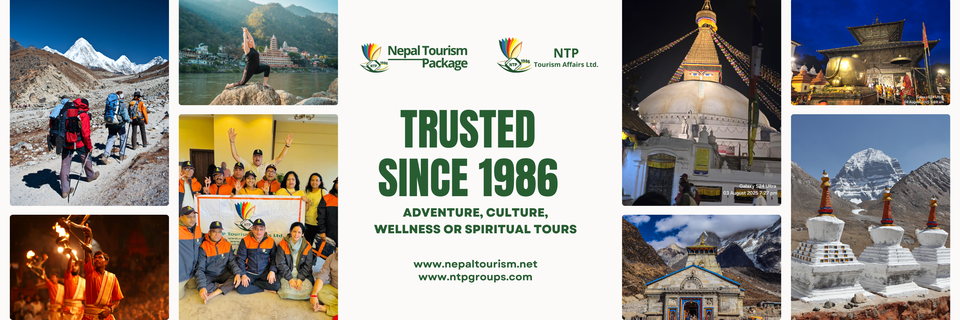
06 Nights / 07 Days
Description
Location: Kathmandu - Pokhara - Nayapul - TikheDhunga - Ghorepani - Poon Hill - Tadapani - Ghandruk - Landruk
The Ghorepani Hill trek is considered a classic. It is the best short trek in Nepal. A perfect short beautiful journey in the Annapurna region. Trekking the foothills of the Annapurnas brings you breath-taking panoramic views of the Massif Himalayas, culminating in the showstopping viewpoint from atop Poon Hill.
Day 1: Kathmandu – Pokhara (6 hours drive, or 30 mins flight)
Day 2: The Trek Begins: Pokhara – Nayapul - TikheDhunga (6-7 hours)
Day 3: TikheDhunga – Ghorepani (6-7 hours)
Day 4: Ghorepani – Poon Hill (3210 meters) - Tadapani (5-6 hours)
Day 5: Tadapani – Ghandruk - Landruk (5-6 hours)
Day 6: Landruk - Pokhara (5-6 hours)
Day 7: Pokhara - Kathmandu (6 hours drive, or 30 mins flight
What is the Ghorepani Annapurna Trek?
The Ghorepani Poon Hill Trek is a moderate trek that takes you to Poon Hill, one of the most famous viewpoints in Nepal, offering breathtaking views of the Annapurna and Dhaulagiri mountain ranges. It typically lasts 4 to 5 days and passes through charming villages, rhododendron forests, and offers a cultural experience of the local Gurung, Magar, and Brahmin communities.
How difficult is the Ghorepani Annapurna Trek?
The trek is considered moderate, making it suitable for beginners and families with good health. However, the trek involves ascending to high altitudes (up to 3,210 meters at Poon Hill), so it’s essential to have a reasonable level of fitness and be prepared for some uphill climbs.
What is the best time to do the Ghorepani Annapurna Trek?
The best times to trek are:
Spring (March to May): This season offers clear skies, moderate temperatures, and the chance to see rhododendron blooms.
Autumn (September to November): This is the peak trekking season in Nepal, providing stable weather, clear mountain views, and comfortable temperatures.
Do I need a guide or porter for the trek?
While the trek can be done independently, it’s recommended to hire a guide, especially if it’s your first time trekking in Nepal. A guide will help with navigation, language barriers, and offer insight into the local culture. A porter can carry your heavy backpack, making the trek more comfortable.
What are the highlights of the trek?
Poon Hill: The sunrise from Poon Hill is a major highlight, with stunning views of Annapurna, Dhaulagiri, Machapuchare, and other peaks.
Ghorepani Village: A beautiful village with traditional Gurung culture.
Rhododendron Forests: Trekking through lush forests filled with blooming rhododendrons (in spring) is a visual treat.
Charming Villages: You’ll pass through authentic villages such as Tikhedhunga, Ghorepani, and Ghandruk, where you can experience local hospitality.
What type of accommodation is available?
Tea houses and guesthouses are available along the trek. These offer basic accommodation with rooms equipped with beds, blankets, and shared bathrooms. Food is available at tea houses and includes a variety of dishes like dal bhat (lentil soup), momo (dumplings), noodles, and more.
What permits do I need for the Ghorepani Annapurna Trek?
You will need two permits:
Annapurna Conservation Area Permit (ACAP): A fee is required for the conservation area.
Trekkers’ Information Management System (TIMS) Card: This is required for all trekkers to enter the Annapurna region.
How much does the trek cost?
The cost of the Ghorepani Poon Hill Trek can vary depending on whether you hire a guide or porter, the type of accommodation, and how much you spend on food and drinks. On average, the cost can range from $300 to $600 USD for the entire trek.
What is the altitude of Poon Hill?
Poon Hill is at an altitude of 3,210 meters (10,531 feet) above sea level. Although it’s not very high, altitude sickness can still affect some trekkers, so it’s important to acclimatize properly and drink plenty of water.
Is there any risk of altitude sickness on this trek?
The risk of altitude sickness is low, but it’s always good to be aware. The highest point of the trek is Poon Hill at 3,210 meters, which is not high enough to cause serious altitude sickness. However, some trekkers may feel mild symptoms like headaches or dizziness. To minimize the risk, it’s recommended to trek at a comfortable pace and drink plenty of water.
What should I pack for the Ghorepani Annapurna Trek?
Clothing: Layered clothing (base layer, fleece jacket, waterproof jacket, and warm hat/gloves for early mornings at higher altitudes).
Footwear: Comfortable trekking boots or shoes.
Essentials: Sunscreen, sunglasses, water bottle, camera, power bank, and headlamp.
Other items: A small backpack (daypack), trekking poles, personal hygiene items, and a sleeping bag (depending on the season).
Can I do the Ghorepani Annapurna Trek without prior trekking experience?
Yes, the Ghorepani Annapurna Trek is suitable for beginners, as long as you are in good physical condition and accustomed to walking long distances. Some days can be challenging, with steep ascents and descents, but with proper preparation and a moderate pace, most people can complete the trek comfortably.
What kind of food is available during the trek?
In the tea houses along the trek, you will find a variety of food, such as:
Dal Bhat: A traditional Nepali meal of rice, lentil soup, and vegetables.
Momos: Nepali-style dumplings.
Noodles, pancakes, and porridge.
Tea, coffee, and hot drinks. Keep in mind that the food can be more expensive as you go higher up the mountain.
Inclusion:
